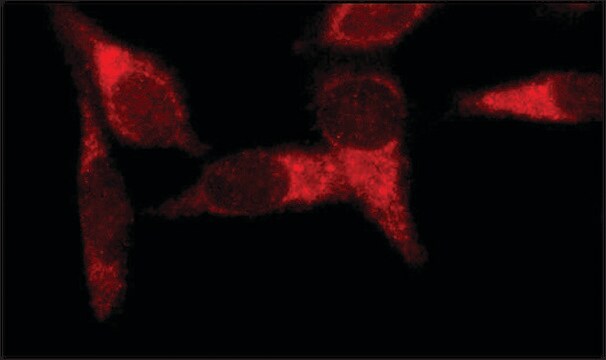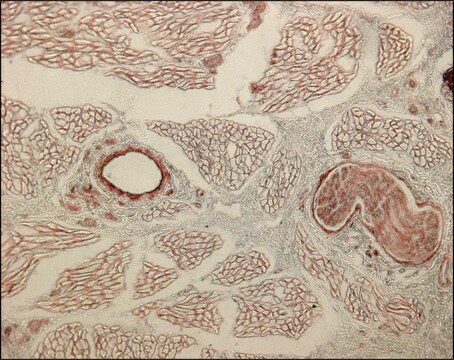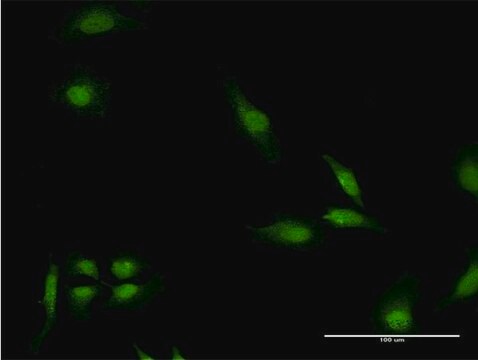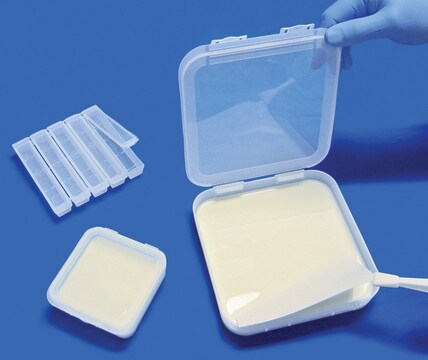E3906
Anti-Early Endosomal Antigen 1 (C-terminal) antibody produced in rabbit
~1 mg/mL, affinity isolated antibody, buffered aqueous solution
Synonim(y):
Anti-EEA1, Anti-Endosome-associated Protein p162, Anti-Zinc Finger FYVE Domain-containing Protein 2
About This Item
Polecane produkty
pochodzenie biologiczne
rabbit
białko sprzężone
unconjugated
forma przeciwciała
affinity isolated antibody
rodzaj przeciwciała
primary antibodies
klon
polyclonal
Formularz
buffered aqueous solution
masa cząsteczkowa
antigen ~160 kDa
reaktywność gatunkowa
mouse, rat, human
stężenie
~1 mg/mL
metody
indirect immunofluorescence: 5-10 μg/mL using rat NRK cells
western blot (chemiluminescent): 0.1-0.2 μg/mL using whole extract of human HeLa cells
western blot (chemiluminescent): 0.2-0.4 μg/mL using whole extract of mouse NIH3T3 cells
numer dostępu UniProt
Warunki transportu
dry ice
temp. przechowywania
−20°C
docelowa modyfikacja potranslacyjna
unmodified
informacje o genach
human ... EEA1(8411)
mouse ... Eea1(216238)
rat ... Eea1(314764)
Opis ogólny
Immunogen
Zastosowanie
- barwieniu fluorescencyjnym
- konfokalnej laserowej mikroskopii skaningowej
- immunoprecypitacja
- mikroskopia immunofluorescencji pośredniej
- mikroskopia fluorescencyjna
- immunoblotting
- immunofluorescencja.
Działania biochem./fizjol.
Postać fizyczna
Oświadczenie o zrzeczeniu się odpowiedzialności
Nie możesz znaleźć właściwego produktu?
Wypróbuj nasz Narzędzie selektora produktów.
produkt powiązany
Kod klasy składowania
10 - Combustible liquids
Klasa zagrożenia wodnego (WGK)
WGK 3
Temperatura zapłonu (°F)
Not applicable
Temperatura zapłonu (°C)
Not applicable
Środki ochrony indywidualnej
Eyeshields, Gloves, multi-purpose combination respirator cartridge (US)
Wybierz jedną z najnowszych wersji:
Masz już ten produkt?
Dokumenty związane z niedawno zakupionymi produktami zostały zamieszczone w Bibliotece dokumentów.
Nasz zespół naukowców ma doświadczenie we wszystkich obszarach badań, w tym w naukach przyrodniczych, materiałoznawstwie, syntezie chemicznej, chromatografii, analityce i wielu innych dziedzinach.
Skontaktuj się z zespołem ds. pomocy technicznej








